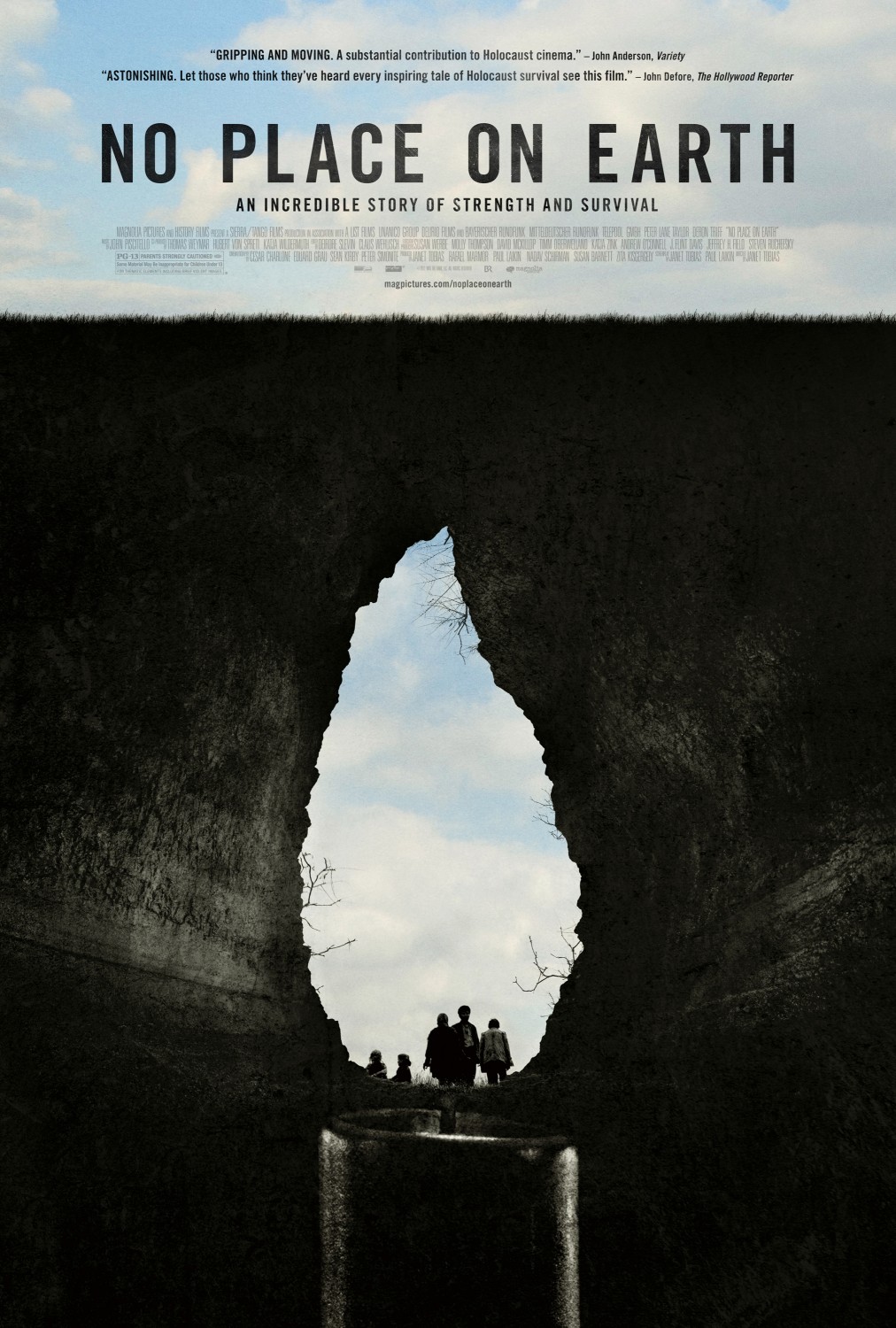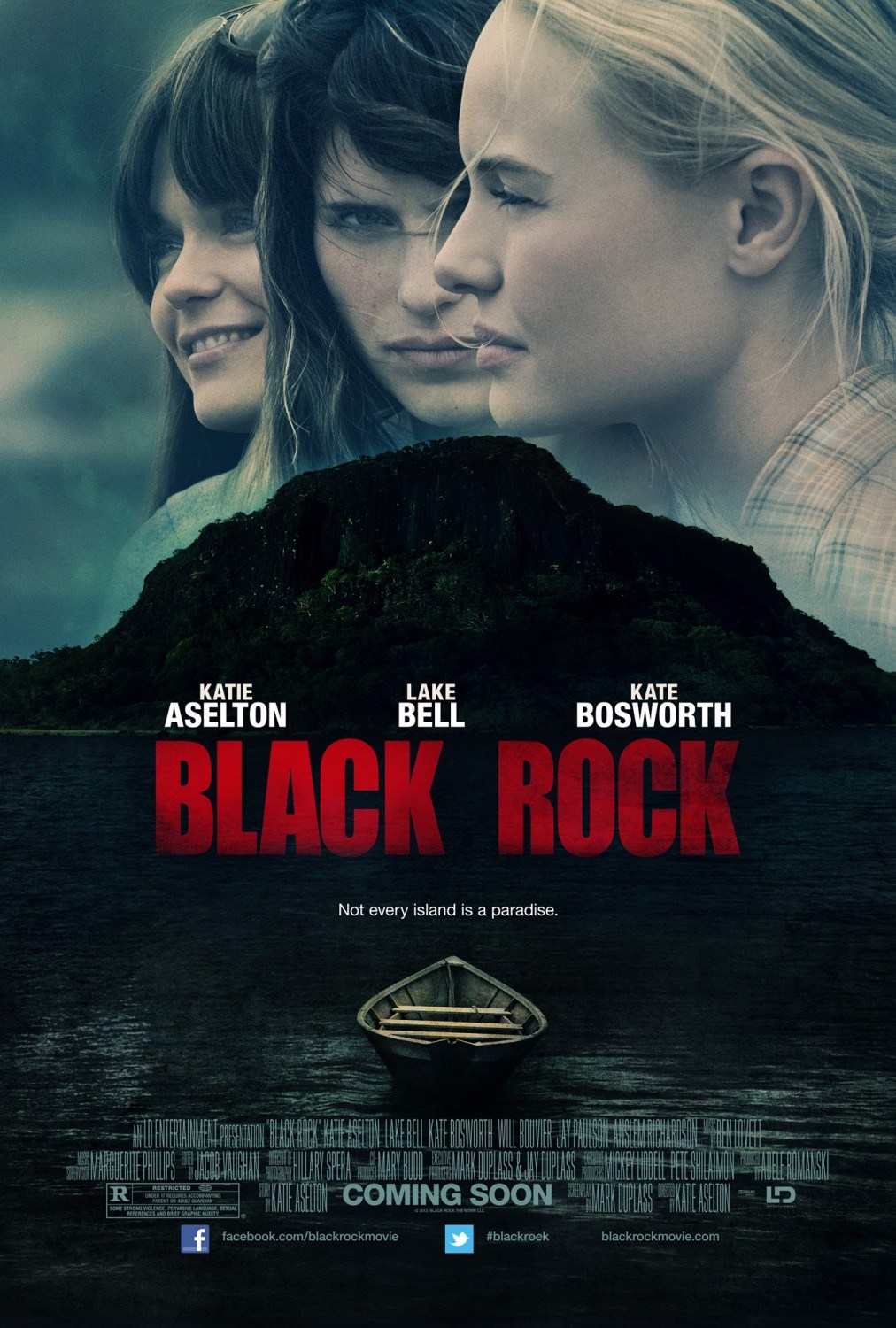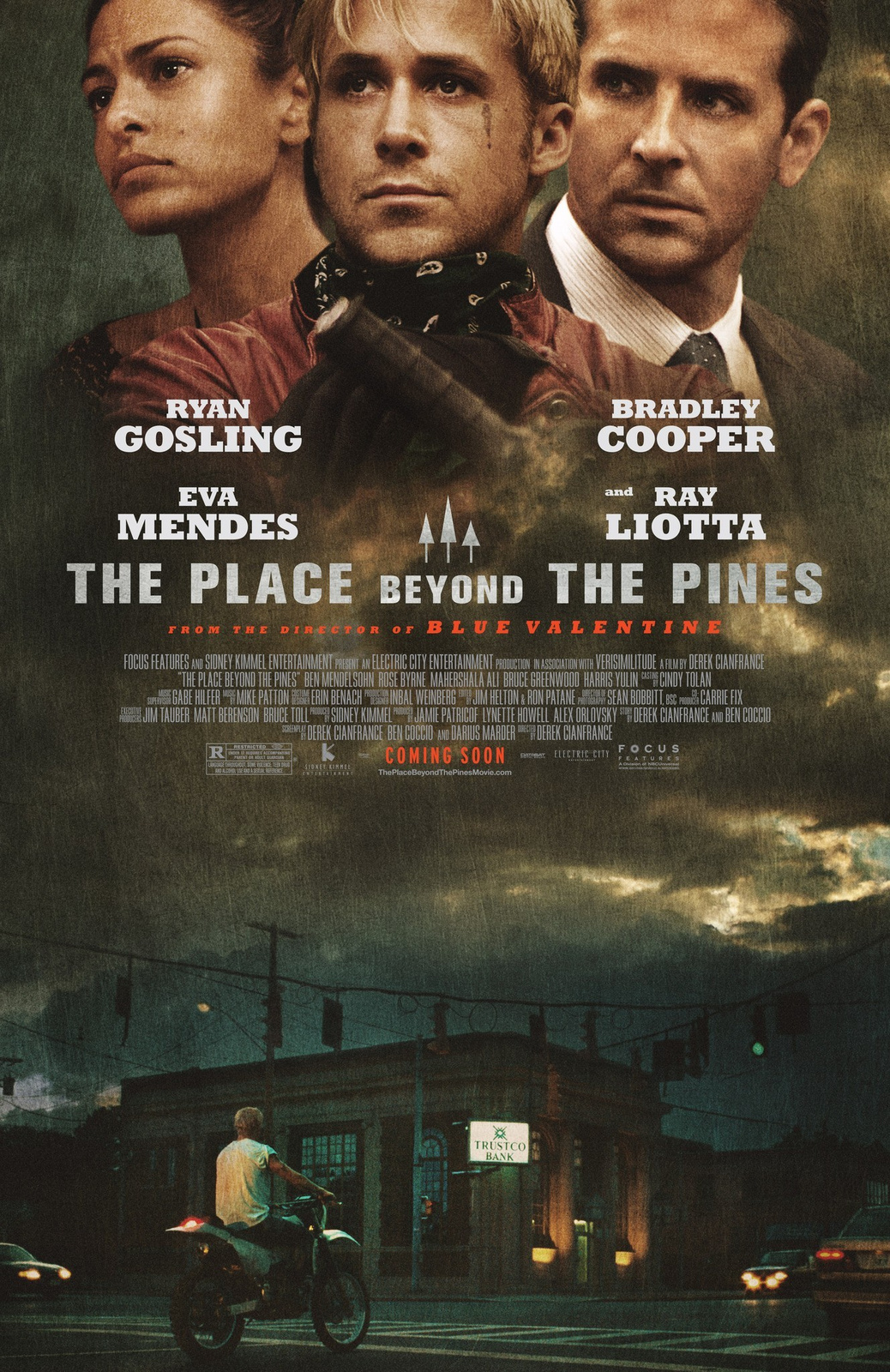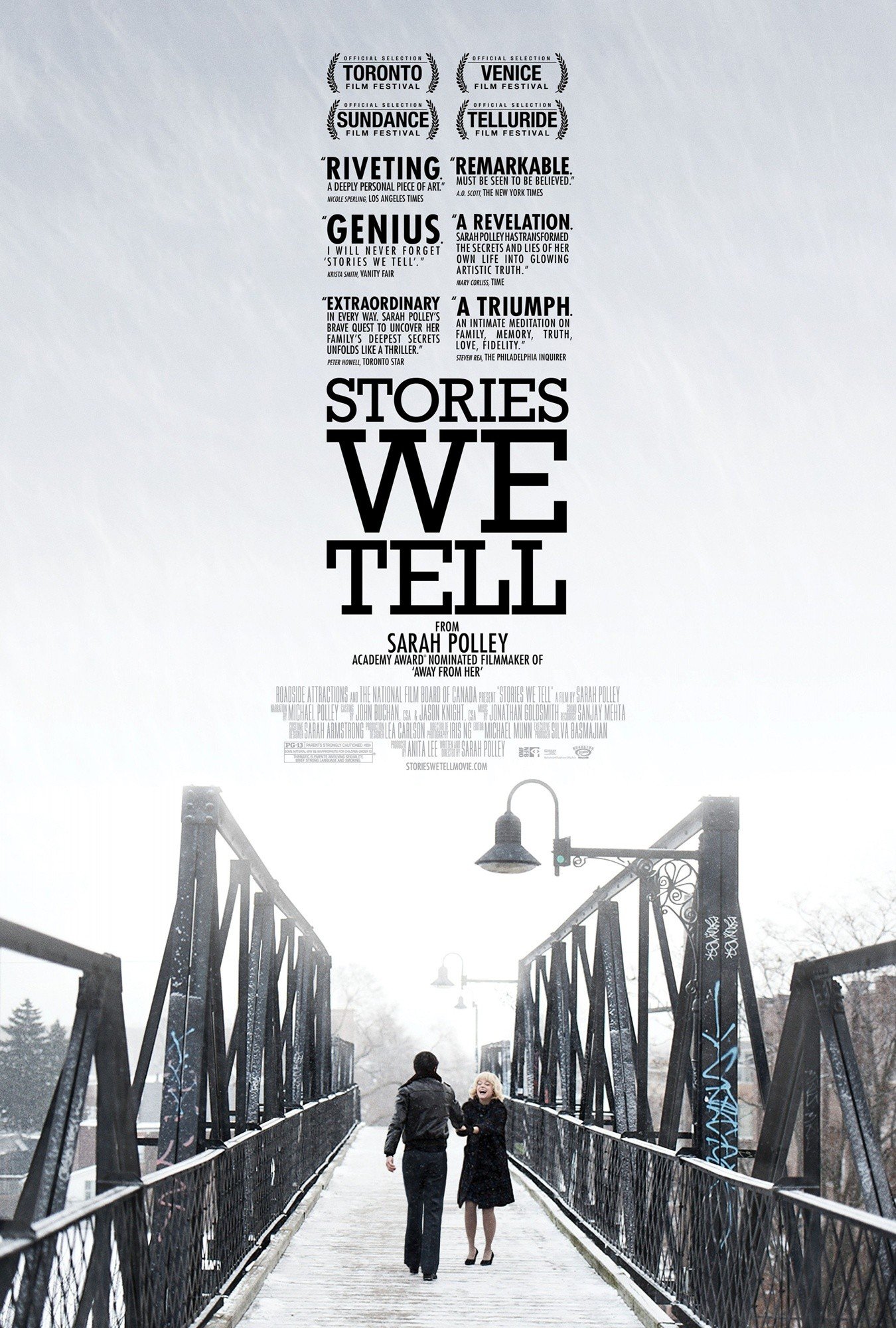We start the Top 7. You finish the Top 10.
In a year that seems over-populated with apocalyptic films, 2013 has given a generous amount of hope to the concept of going to the movies, and that's only with six months off the calendar. With its finest showing to be a healthy mix of genres, budgets, and storytelling styles, the year of 2013 has seen some grand pieces of work from filmmakers that range from retiring heavyweights like Steven Soderbergh to rising talents like Katie Aselton or Derek Cianfrance.
Below are my TOP 7 Films So Far of 2013. And after you've finished soaking up this list, don't forget to read Jeff's list too.
Recap: A documentary about an extended family who hid in two different caves to elude the Gestapo during World War II, told partially with dramatic reenactments. One does not need to be a fan of history, or even directly drawn to Holocaust survival stories, to enjoy No Place on Earth. This movie can easily appeal to and entertain any audience member who likes discovering a great true story. Reason: No Place on Earth is evidence that while cinema seems to have a soft spot for stories of survival during the Holocaust, such fascination often comes within reason. Sure, there are movies that seem only out to manipulate the vulnerable heartstrings of such a traumatic historical event. But then there are survival movies like last year’s In Darkness, which brought to light an incredible story of Jews who lived in the sewers in order to hide from Nazis. Or with No Place on Earth, here is a narrative that defines unbelievable storytelling, its believability reinforced by the personal reflections of its speaking survivors. Like other tales of Holocaust survival, here is a gripping story that encapsulates so many factors of human existence, including the heroic will to live, while staring into the face of unpredictable circumstances.
Wary not of the movie's History Channel association, (despite their overall decent productions), as the reenactments shown in the film, shot with a keen dramatic eye, don’t cheapen this doc’s storytelling but enhance it. Pulling off an excellent double dip, the compelling No Place on Earth conveys its real life documentary events like a great narrative.
6. Pain & Gain
Recap: Three Miami bodybuilders (Mark Wahlberg, Anthony Mackie, Dwayne Johnson) team up to rob a wealthy sandwich shop owner (Tony Shaloub). Fans of Wahlberg, Johnson, and especially Michael Bay can not miss this movie. For all the aggressive ugly content within the film, whether they be frustrating, terrible, or both, bulking up on tolerance for Pain & Gain’s shallow expressions is necessary. Reason: Inject steroids into the Coen Brothers, give them buzzcuts, constantly place them around American flags, take away half of their clever brain cells, but inflate the ones that love an irresistibly crazy idiot plot (with madcappery that seems to go beyond regular human potential). What you’re left with is Pain & Gain, a superbly irreverent American crime story from a director who supes up every one of his films like they are Super Bowls. While previously he played with special effects and robots, now Bay is playing with an insane true story involving body builders, with an intense (and hilarious) nuttiness in its dark comedy, as ‘roided up by a very selfish pursuit for The American Dream. As Peter Stormare’s brief appearance in this movie confirms, this is director Michael Bay’s own version of Fargo.
As a mainstream crime movie, Pain & Gain is a bizarre comedy that shows Bay can certainly exceed at the basics in film storytelling: compelling characters, a driving narrative, productive visual style, and an eye for surprise. One can only wonder what Bay could do with more stories like this, as opposed to ones that require a numbing amount of CGI. As a potentially hazardous piece of Americana, Pain & Gain is a lot to chew on, for better or for worse, love it or leave it. But, the fact remains true: no mainstream director can so naturally match a whole nation’s muscle mass like Michael Bay.
Recap: A trip to a small island by three reunited friends (Katie Aselton, Lake Bell, Kate Bosworth) turns into a moment of survival. If you think Katie Aselton is just Kevin’s wife on “The League,” you should definitely see this movie.
Reason: This thrilling indie begins as an innocent reunion between three lady friends, and then becomes a nightmarish movie of survival. There is no hint of what lay ahead until it happens, instantly giving this movie a palpable realism, while also elevating it beyond simple genre fare. The third act is especially terrific for the chaos it reigns on screen with a small cast and a limited location.
Black Rock is a badass movie, both with its raw presentation of survival, and as a force against the rampant automatic objectification of women across genre and media. Most importantly, the film is the aforementioned badass in a way that can’t be mistaken for masculine. Black Rock points a shotgun in the face of the male gaze, and pulls the trigger.
4. Side Effects
Recap: A vulnerable young woman (Mara) is given antidepressants by her doctor (Law) with fatal consequence. If you liked Contagion, you’ll probably enjoy this one as well. However, anybody who needs at least a half hour of Channing Tatum onscreen time might find Side Effects to be a little disappointing. Reason: Before Steven Soderbergh hangs his bald head cap on the mantle of movie-making and moves on to his celebrity art collage and tweeting about the massive menu at The Cheesecake Factory, he leaves moviegoers with Side Effects, a strong dosage of the type of craftiness that makes his filmmaking a drug itself. The Soderbergh Drug can be applied to any script, to any actor, and because it’s such a guaranteed mix, it always does the job.
The success of Soderbergh’s possible last film is a painful reminder of the potential that is being wasted for a world of movies that will sorely lack his unique presence. Side Effects shows why it will be all the more difficult to quit Soderbergh cold turkey, especially because his stuff gets you so hiiiiiiiiiiiiiiiiiiiiiiiiiiiiigh.
Recap: A young father (Gosling) becomes a bank robber to help take care of his estranged baby boy. This movie appeals to many different types of filmgoers; those who like rich epics, those who like Ryan Gosling without a shirt on, those who like Bradley Cooper, those who like crime dramas, those who enjoy looking at fast vehicles, and more. But the great aspect about Pines’ appeal is that it offers something unexpected for all. All a viewer must do is sign up for the film’s 140 minute running time. Reason: In 2010, Derek Cianfrance gave us the heartbreaking duet Blue Valentine, a film pieced from the desperation we experience when begging a person we love to stay. Now, with his third film (but his second to gain distribution), Cianfrance has given us what works like an opera, telling three linked yet individual arcs within the backdrop of Schenectady, New York. The Place Beyond the Pines, a thoroughly impressive swing for the fences, is an ambitious “Neapolitan” epic with a soul to match its physical size. This is a big movie, and it is beautiful.
2. Fast & Furious 6 [Furious 6]
Recap: International fugitives Dom (Diesel) and Brian (Walker) are hired by a federal agent (Johnson) to help stop a slick European man (Evans) from producing a dangerous weapon. If you like great action movies, and/or are weary of popcorn spectacles created more with computers than real life, do not miss out on the insane fun you’ll have watching Fast & Furious 6. And if you loved Fast Five, seeing this movie should be a no-brainer. Reason: Keeping in heart with director Justin Lin’s daredevil-like mentality of continually pushing the spectacle while staying within the realm of a preset science, this is a beautiful movie that gets big, bigger, and then it’s huge, all while keeping a mindful eye for a non-manipulative left turn. The second-to-last sequence of this movie, involving a tank, is usually when most franchises would call it a day. But Fast & Furious 6 proves its ambition is like no other franchise today, and goes for one more massive action sequence afterward that provides more action brilliance, and is unlike anything I’ve ever seen.
As if it wasn’t clear from the previous Fast Five, this franchise has grown from its origins of car porn sponsored by NOS. Frosted tips are dead, no one still really cares what Paul Walker’s character’s name is, but the drive for thrills is more addictive than ever. We can now trust the Fast & Furious movies for the consistently monumental spectacle no one else dares to make a reality.
Recap: Filmmaker Sarah Polley interviews her family members to discuss a secret that changed her life forever. Stories We Tell goes beyond a demographic that enjoys a great documentary. If you simply like good narratives, don’t miss out on this film. And if you liked Polley’s previous Take This Waltz, Stories We Tell will be yet another gift. Reason: Half of the journey in telling a great story is finding the right subject. For this endeavor in documentary, the highly honest Polley goes inward, into a secret that remained uncovered in the past years, but with truths that would eternally change its witnesses. Using her brothers, sisters, family friends, and father as documentary subjects, Polley shares with audiences the tale of a family tree mystery that directly influences who she is as a person, and also as an open book filmmaker. The moments of honest recollection Polley gets from her interview subjects are continually fascinating, the revelations playing to highest levels of an audience’s emotions. This story is very funny, very sweet, and very fulfilling.
Like any good story should, this portrait of the past turns its multi-generational intervention into something that is as important to us as its first-hand witnesses. Collectively, their stories achieve a grand narrative, celebrating the surprising poetry that so oddly, but so beautifully, finds its way into non-fictional life.




